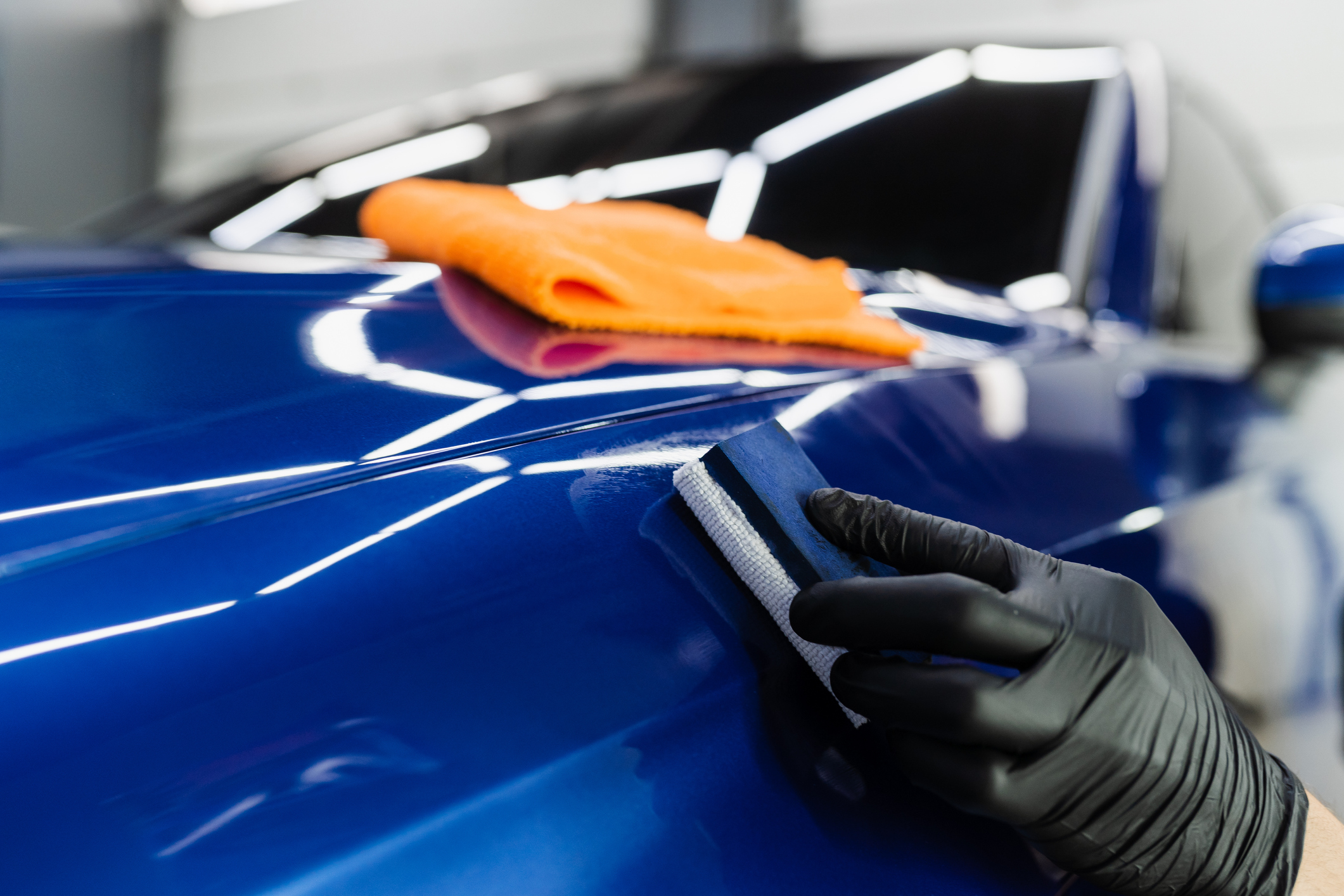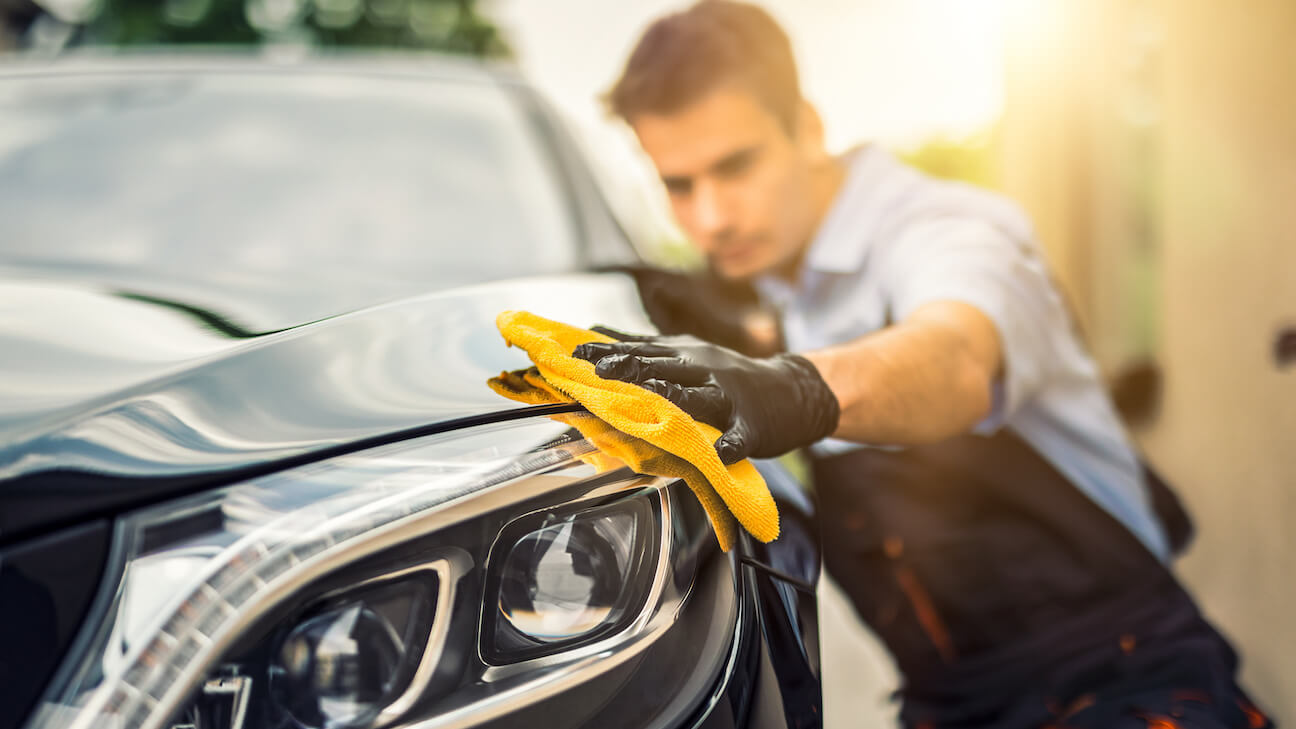Why Ceramic Layer Is the Ultimate Service for Lasting Sparkle
In the world of auto treatment, ceramic covering has actually become a superior option to typical shaving approaches, supplying unequaled long life and security for an automobile's finish. This sophisticated option not just boosts the visual allure of your cars and truck but likewise supplies a powerful barrier versus ecological contaminants and UV damages. As we check out the elaborate advantages and systems behind ceramic coverings, it comes to be important to recognize just how they redefine vehicle upkeep and long life - Detail'd Luxury Detailing & Coatings Ceramic Coating. The ramifications of selecting this cutting-edge method might fundamentally alter just how you perceive the care of your automobile.

What Is Ceramic Layer?
Specifying ceramic covering involves understanding its role as a safety layer for different surfaces, especially in the automobile industry. Ceramic finishing is a fluid polymer applied to the outside surface areas of cars, producing a chemical bond with the factory paint. This procedure results in a resilient layer that improves the vehicle's appearance while providing an awesome barrier against environmental impurities.

In enhancement to auto applications, ceramic coatings are likewise used in various industries, including aerospace, marine, and commercial sectors. As a modern technology, ceramic finishing continues to evolve, with advancements enhancing its sturdiness, hydrophobic residential or commercial properties, and resistance to scratches and UV damages.
Benefits of Ceramic Covering
Ceramic layer provides a plethora of advantages that significantly improve the longevity and look of car surfaces. One of the most significant advantages is its extraordinary resilience. Unlike conventional waxes or sealants, ceramic finishes provide a durable protective layer that can withstand severe ecological problems, including UV rays, acid rain, and road gunk. This sturdiness translates to a longer-lasting sparkle, minimizing the frequency of reapplication.
An additional trick advantage is the hydrophobic residential or commercial property of ceramic layers. This function creates water to bead up and roll off the surface, properly reducing water places and lowering the accumulation of dust and impurities. Because of this, automobiles treated with ceramic coverings are less complicated to clean, saving both time and initiative for owners.
Additionally, ceramic finishings enhance the general appearance of the car by conveying a deep, glossy finish. This aesthetic improvement not only boosts the lorry's appearance but can additionally raise its resale value, making it a clever financial investment for car enthusiasts. Generally, the myriad benefits of ceramic finishing make it a suitable option for any individual looking for to safeguard and keep their vehicle's outside in pristine condition.
How Ceramic Coating Functions
The safety top qualities of ceramic coating stem from its innovative chemical structure, mostly being composed of silicon dioxide (SiO2) When put on a car's surface, the finishing chemically bonds with the paint, creating a hydrophobic layer that drives away water, dust, and various other pollutants. This bond is accomplished via a process called cross-linking, where SiO2 molecules adjoin, forming a resistant and durable barrier that sticks strongly to the substrate.
As soon as healed, the ceramic finishing improves the surface area's hardness, providing resistance versus scrapes and swirl marks. This protective layer likewise serves as a shield against hazardous UV rays, which can trigger oxidation and fading with time. Furthermore, the coating's smooth surface reduces friction, internet making it easier to clean the surface while making certain that crud and debris do not adhere as easily.
Additionally, the longevity of ceramic coatings is a substantial advantage, with many solutions using defense that can last for a number of years under proper upkeep. This combination of chemical bonding, hydrophobic homes, and UV resistance makes ceramic covering an effective option for preserving the aesthetic appeal and honesty of vehicle surfaces.
Comparing Ceramic Coating to Traditional Wax
Frequently forgotten, the contrast in between ceramic finishing and conventional wax discloses substantial distinctions in longevity, upkeep, and security. Traditional wax, while using a temporary sparkle, commonly lasts just a few weeks to a couple of months prior to requiring reapplication. Its protection is restricted, mainly securing against UV rays and light contaminants, however it can conveniently be cleaned away or broken down by environmental factors.
In contrast, learn this here now ceramic finish offers a lasting and durable obstacle that chemically bonds with the car's paint. This advanced modern technology uses remarkable security versus harsh ecological aspects, including acid rainfall, bird droppings, and roadway salts. Ceramic coatings can last a number of years, considerably minimizing the frequency of maintenance and reapplication contrasted to wax.
Furthermore, ceramic finishes display hydrophobic residential or commercial properties, allowing water and contaminants to grain and slide off the surface area better. This feature not only boosts the vehicle's look but additionally makes cleaning much easier. In summary, while conventional wax may be an economical service for temporary shine, ceramic covering attracts attention as the premium option for those seeking resilient security and ease of maintenance.
Maintenance Tips for Porcelain Coated Vehicles
Keeping the integrity and look of a ceramic covered vehicle More about the author needs certain treatment strategies to make certain the covering does optimally over its life expectancy. Firstly, regular cleaning is vital. Use a pH-neutral cars and truck hair shampoo and a microfiber laundry mitt to avoid damaging the surface. Avoid automated vehicle washes with rough brushes that can harm the layer.
After cleaning, constantly completely dry the vehicle with a soft microfiber towel to avoid water places. It is also suggested to apply a ceramic-safe drying aid to improve shine and add a layer of protection.
For optimum upkeep, take into consideration doing a maintenance wash every two to three weeks and an extensive information every 6 months. Additionally, avoid utilizing abrasive cleansing products or devices that might jeopardize the ceramic layer.
If small blemishes develop, light polishing with an appropriate product can aid recover the covering's integrity. Using a ceramic finishing booster every couple of months can rejuvenate the surface and extend the performance of the first application. By adhering to these upkeep ideas, proprietors can take pleasure in the resilient advantages of their ceramic covered cars.

Conclusion
In conclusion, ceramic layer emerges as the remarkable choice for achieving and keeping a lasting shine on automobiles. The benefits of ceramic coating plainly establish its prominence over conventional wax choices in automotive care.
In the world of automotive treatment, ceramic finish has arised as a remarkable alternative to conventional shaving methods, using unparalleled durability and security for a vehicle's surface. As we explore the complex benefits and devices behind ceramic coverings, it ends up being necessary to understand exactly how they redefine car upkeep and long life. Ceramic finishing is a fluid polymer used to the exterior surface areas of vehicles, creating a chemical bond with the factory paint.Ceramic layer offers a wide variety of benefits that dramatically boost the longevity and appearance of car surfaces.In addition, ceramic finishings improve the general appearance of the automobile by imparting a deep, glossy surface.